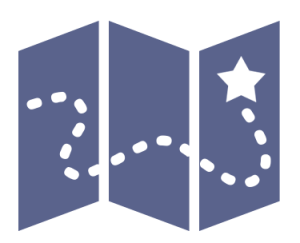
Roadmap: Get Rhythm
This is a preview of a Musical U Roadmap.
Roadmaps are a “big picture” guide to developing a particular musical skill. Learn more about Roadmaps here.
This roadmap will help you “get rhythm”, meaning both that you’ll understand rhythm and improve your own sense of rhythm. Good rhythm is often associated with drummers and bassists but having strong rhythm skills is in fact important for every musician.
By the end of this roadmap you will have a solid sense of the pulse of music: an “inner metronome”. You will be able to read and write rhythm notation for the kinds of pattern you hear and play in real music. You will also get familiar with the lively art of syncopation which can bring vitality and expressive power to your playing.
This roadmap can be followed in parallel with developing your pitch skills, but it is normally better to focus on one of these areas at a time and have a separate Training Plan for each.
Requirements
To use this roadmap effectively you should complete the following modules before you start:
Phase 1: Learn Rhythm Basics
Phase Accomplishments
- Understand the fundamental concepts of rhythm.
- Start to develop an instinct for following the beat.
Before starting to develop your sense of rhythm it’s important to understand the fundamental concepts involved. We all have a natural instinct for rhythm to some extent, but that doesn’t mean you should expect it all to come naturally.
Get off to a strong start in rhythm by giving yourself a solid foundation in rhythm fundamentals. In this module you’ll learn what musicians mean by “rhythm”, “tempo” and “the pulse”, as well as the benefits of rhythm training. You’ll also learn the basics of counting time, which is what all other rhythm skills build on top of.
Continue learning about the fundamental beat of music with the “Tempo and the Beat” module. You’ll learn what musicians mean by “on the beat”, “off the beat” and “backbeat”, and the difference between “straight” and “syncopated” rhythms.
If you have difficulty
As always, if you have specific questions about something in a module, you can ask in the end-of-module Discussion.
If you’re not sure if you’re getting it right with the clapping and counting exercises, the best thing to do is [guidance shown to members only].
Start This Roadmap Today!
Get instant access to the full Roadmap and every training module included when you join Musical U today.
Phase 2: Hone Your Sense of Rhythm
Phase Accomplishments
- Continue practicing with the beat (pulse) of music.
- Refine your rhythmic accuracy through regular practice.
With the fundamentals clear, it’s time to start really honing your instinct for musical timing. Your main focus in this phase will be the exercises from the “Rhythm Practice” module:
Begin by working your way through each lesson of the module in order. But don’t leave it there! Identify the areas which need work. Is it identifying the downbeat? Maintaining a steady tempo when the music stops? Understanding how straight and swung beats are different and moving from one to the other?
Find your areas for improvement and then make the practice exercises a regular part of your music practice. Because rhythm is so fundamental to music you should be able to easily integrate this kind of practice with the pieces you are playing and listening to. Make yourself intensely conscious of the rhythms you hear and play, and challenge yourself to mimic and then adapt them.
If you have difficulty
The “Rhythm Practice” module provides quite a broad range of rhythm exercises and you may find some areas quite challenging. If you find yourself getting stuck on a certain exercise and you’re unsure if you are correct (or you’re sure that you’re not!) don’t be afraid to ask in the Rhythm discussion boards.
Start This Roadmap Today!
Get instant access to the full Roadmap and every training module included when you join Musical U today.
Phase 3: Master Rhythm Notation
Phase Accomplishments
- Learn to read rhythms from score notation.
- Learn to write down rhythms you hear.
In the first two phases of this Roadmap you were focused on understanding rhythm concepts and honing your in-built sense of rhythm. Now it’s time to tackle one of the common problem spots among musicians: connecting the sound with the score.
Rhythm notation can be confusing. It’s easy enough to get familiar with the symbols for different note durations, but once you start looking at a whole sequence of notes and rests things quickly become more challenging!
Begin with the “Speak Rhythms” module which will introduce you to two methods for speaking rhythmic patterns out loud from the notation. These can be used both to tell you how a written rhythm should sound, and to let you write down the rhythms you hear. The two methods (“count chant” and “Kodály”) can be used individually or together.
Keep in mind that the examples at the end of this module are quite sophisticated. You may want to work through the rest of this phase before tackling these, or take a look and then come back when your notation skills are more advanced to really dissect how they work.
Learning the different note duration symbols is quick, but truly internalising them takes practice. The material in this module is the same: the speaking methods will be quick to learn – but take practice to really sink in. Use the exercise below for this. It’s simple but effective.
 Daily Speaking
Daily Speaking
The two methods for speaking rhythms are interesting, but they only become useful once you can use them in your musical life.
In parallel with this exercise you can also start using the “Read Rhythms” module to practice connecting the sound with the score. This module provides a large number of examples, ranging from slow, short and simple quarter-note patterns, to longer, faster patterns using 16th notes.
By the time you have passed all the quizzes for the two modules in this phase and spent some time speaking out rhythms in your daily musical life, you should be starting to feel very confident and comfortable with rhythm notation.
If you have difficulty
The most common mistake in this phase is [details shown to members only].
If you have any questions or need help, just ask in the end-of-module Discussion or in your Progress Journal.
Start This Roadmap Today!
Get instant access to the full Roadmap and every training module included when you join Musical U today.
Phase 4: Bring Your Skills to the World
Phase Accomplishments
- Integrate rhythm development with your regular music practice.
- Apply your new skills to World music.
At this stage you should be very comfortable with rhythm concepts and have a strong inner metronome. You have learned to connect the sound of rhythmic patterns with the corresponding score notation. And you have been applying these skills in your daily music-making.
Now it’s time to have some fun!
Bring all the rhythm skills you’ve been learning to the “Universal Rhythms” module. This module begins with classic straight rock beats, then recaps swung beats and introduces you to a variety of rhythm styles from around the world including Latin and African rhythms.
Learning about these different approaches to rhythm will expand your own rhythm vocabulary and give you plenty of opportunity to put the skills learned earlier in this Roadmap to good use!
 Rhythm Translation
Rhythm Translation
One of the most powerful aspects of rhythm is its ability to convey a certain style of music. Explore this phenomenon by challenging yourself to “translate” the music you play from one genre to another, simply by changing the rhythm.
Start This Roadmap Today!
Get instant access to the full Roadmap and every training module included when you join Musical U today.

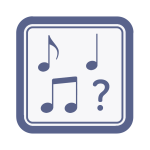 What is Rhythm
What is Rhythm Clapping and Counting
Clapping and Counting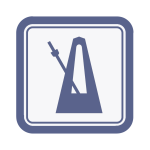 Tempo and the Beat
Tempo and the Beat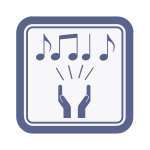 Rhythm Practice
Rhythm Practice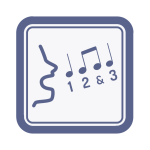 Speak Rhythms
Speak Rhythms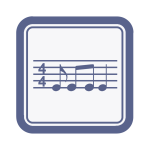 Read Rhythms
Read Rhythms Universal Rhythms
Universal Rhythms